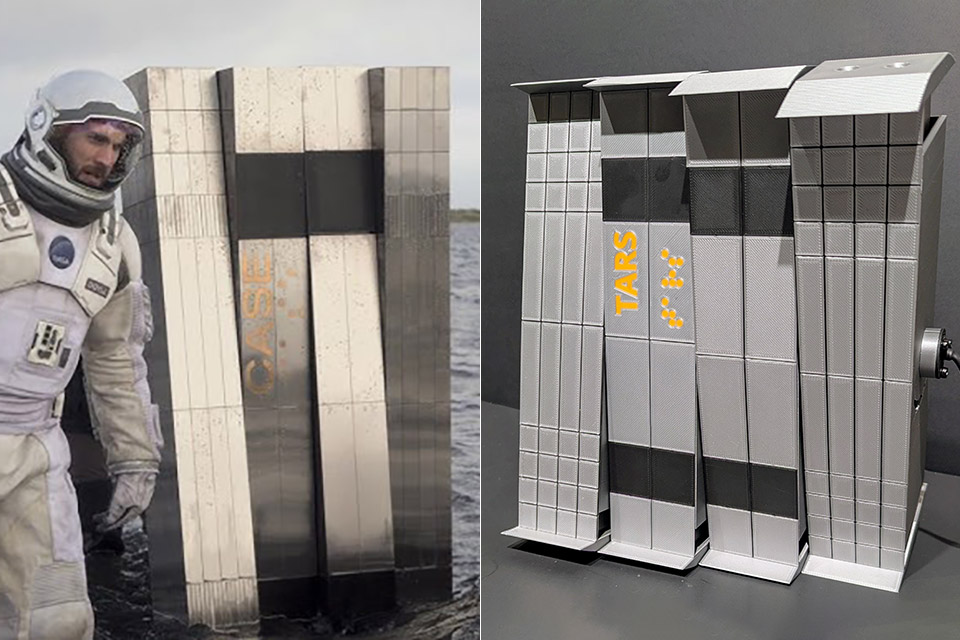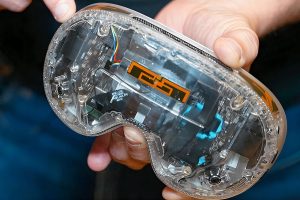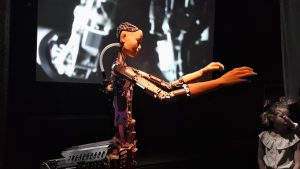TARS Robot from Interstellar Comes Alive, Becomes TARS3D


Aditya Sripada still gets a kick out of those all-night robot build marathons where time just slips away, and you’re completely fixated on getting that next piece to fall into place. Back in November 2022 he found himself spending every free weekend at Nimble, chipping away at a whole robot for fun, in a bit of a makeshift junkyard space with no lab of his own to call home and a pretty tight budget to boot. At first, it seemed like a simple idea: take the famous robot sidekick from Christopher Nolan’s Interstellar, TARS, and bring him to life using good old fashioned 3D printing.
TARS was a large, brick-like robot with a bit of attitude and a sharp tongue that could cut through almost anything. Sripada’s version, known as TARS3D, turned out to be the entire opposite, but in a good manner. Getting shortlisted for the Mike Stilman Award at the IEEE Humanoids The conference in Seoul was a nice bonus because it puts things in perspective (after all, his little robot, TARS3D, is only 10 inches tall and weighs a hair under 2 pounds), but the real kicker is that it can move on its own, in a way that’s quite reminiscent of the original on screen while still pushing the boundaries of what’s possible.
Sale

Bambu Lab A1 Mini 3D Printer, Support Multi-Color 3D Printing, Set Up in 20 Mins, High Speed & Precision,…
- High-Speed Precision: Experience unparalleled speed and precision with the Bambu Lab A1 Mini 3D Printer. With an impressive acceleration of 10,000…
- Multi-Color Printing with AMS lite: Unlock your creativity with vibrant and multi-colored 3D prints. The Bambu Lab A1 Mini 3D printers make…
- Full-Auto Calibration: Say goodbye to manual calibration hassles. The A1 Mini 3D printer takes care of all the calibration processes automatically,…
Sripada teamed up with good friend and fellow robotics whiz Abhishek Warrier to get this project off the ground. They’d already worked together on Sripada’s master’s project at the Carnegie Mellon Robotics Institute, so they had some common ground and their own existing rapport. The idea was to see if they could get a robot with just a simple rectangular frame and a few 3D printed parts moving – just to prove it was possible. This led to a pretty impressive little bot, all printed from scratch except for the pesky power and control wire which is holding it back right now. Although we’ve been warned that may not be necessary for much longer.
The body of TARS3D is supported by four pillars, each of which can move and lock out independently (3 rotary joints and 4 sliding bits). When it walks, the pillars spread out so that it looks like it’s balancing on three legs, with the fourth leg firmly planted on the ground to keep it stable. Its gait is pretty methodical, a very precise and meticulous shuffle; the cameras show it inching along on its flat feet, with a stiff but controlled movement, leaning a bit to one side and then the other as it goes along.

When it switches into roll mode things change in a pretty dramatic way. The pillars swing out in a wide X shape, with two at the front and two at the back, and these curved pads pop out at the ends – they come together to form a pretty cool 8-spoke wheel. But here’s the creative bit: there aren’t any motors driving the wheels; instead, the machine rocks back and forth on its edge. Then gravity takes control, driving it forwards. That’s a clever solution to a long-standing problem…basically, the math behind rimless wheels that bounce around without slipping, allowing TARS3D to move a lot quicker.
Control comes from a combination of physics and machine learning. Sripada and Warrier entered the simulations using the robot’s weight, joint restrictions, and other parameters. Then, deep reinforcement learning performed thousands of tests to determine the optimum method to move. The system is able to generate regular steps based solely on those criteria. However, it also develops new patterns, such as a half-roll for jumping over bumps. When it’s out in the real world though, the program is basically just following the same script, but with adjustments for the drag from the cables. Eventually they’ll be able to get the robot to take its surroundings into account and decide on the spot whether to step or spin.
[Source]
TARS Robot from Interstellar Comes Alive, Becomes TARS3D
#TARS #Robot #Interstellar #Alive #TARS3D








